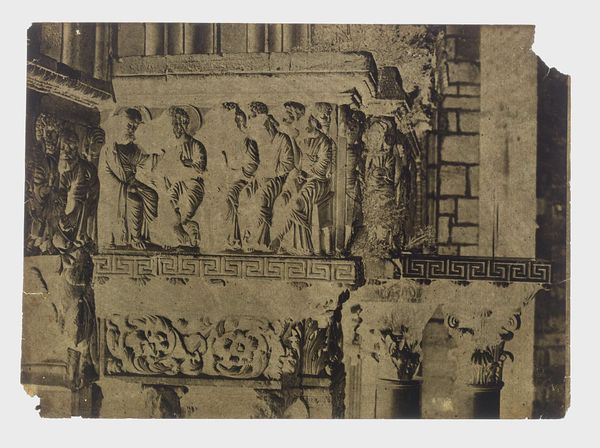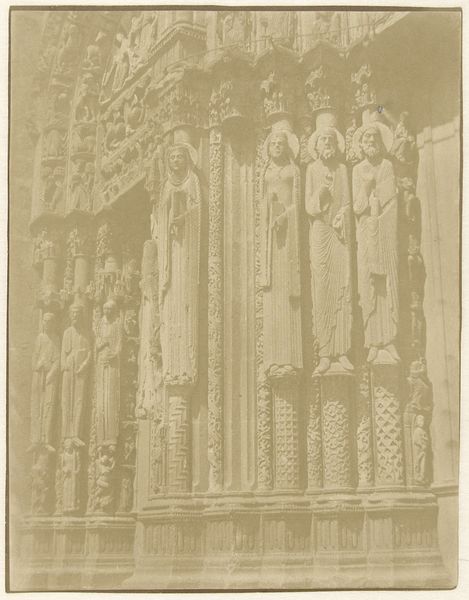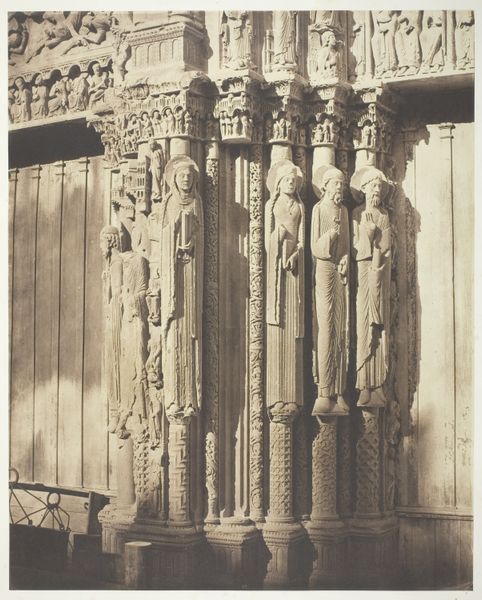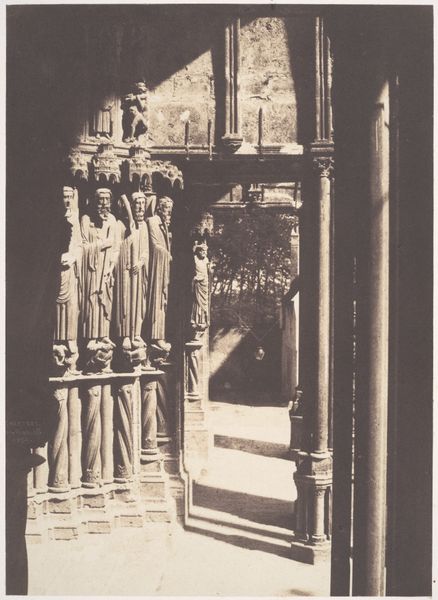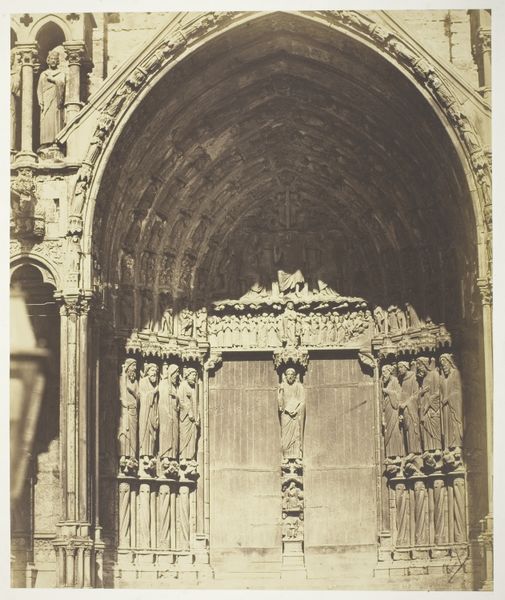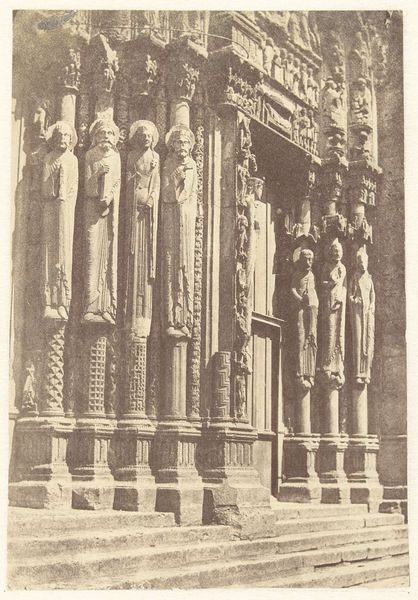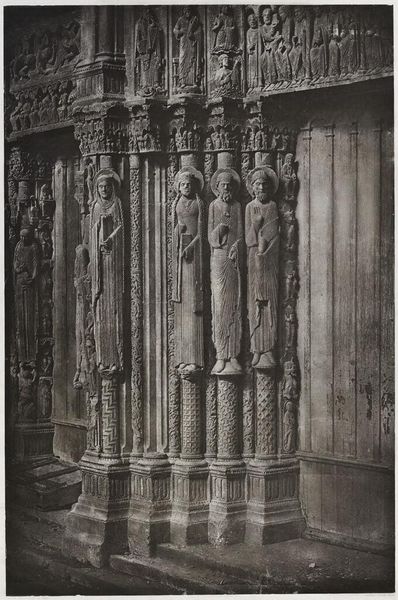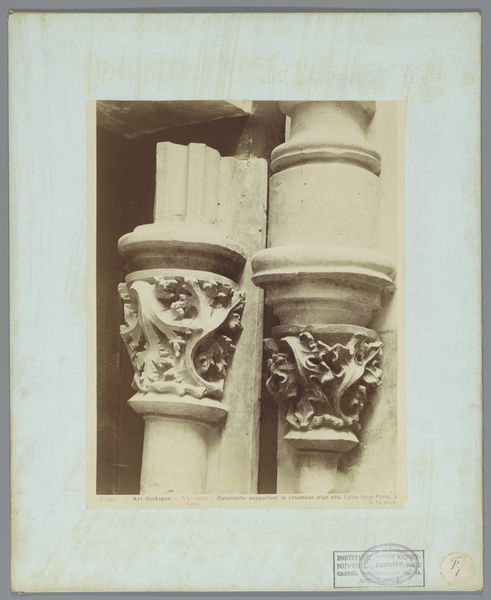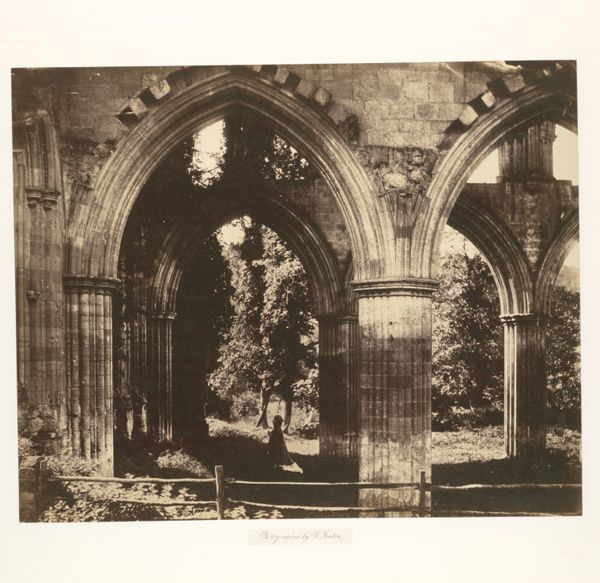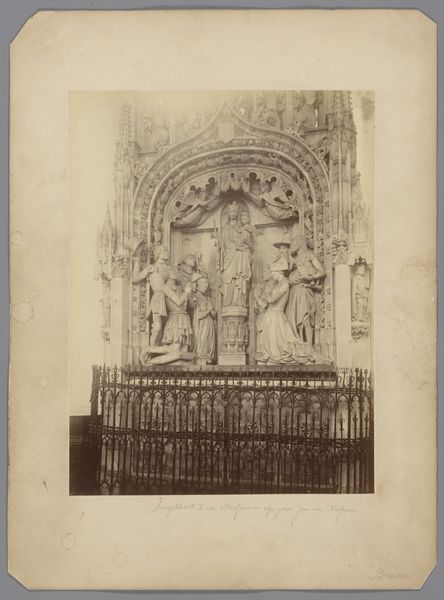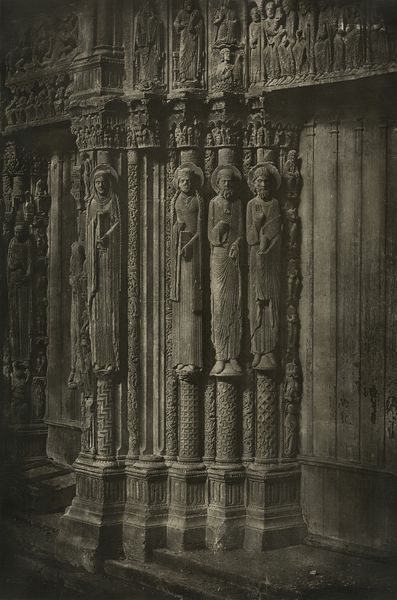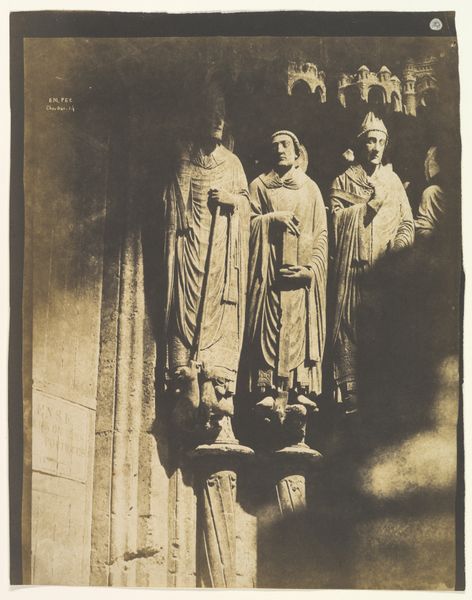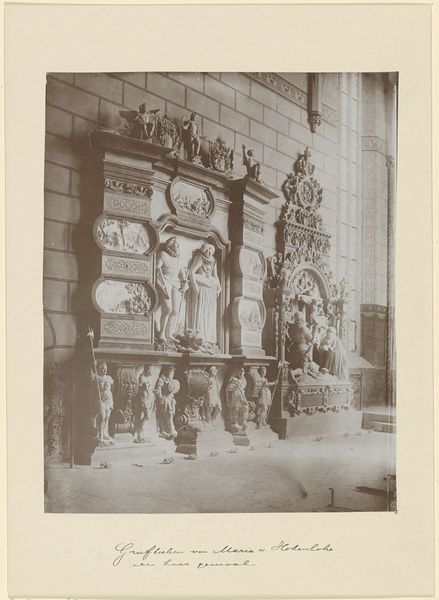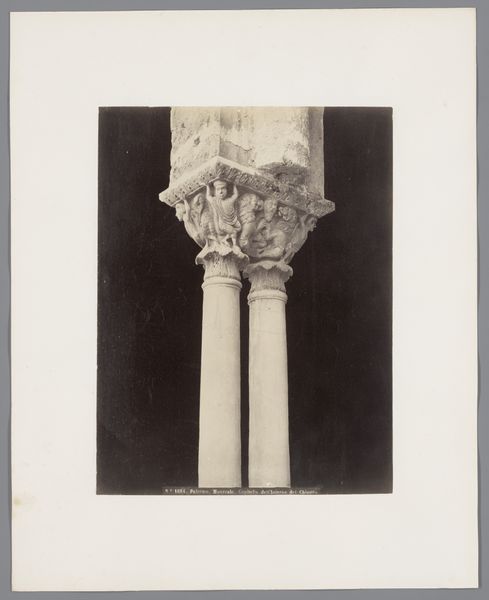
carving, print, photography, sculpture, architecture
#
medieval
#
carving
# print
#
landscape
#
figuration
#
photography
#
sculpture
#
arch
#
architecture
Dimensions: Image: 7 13/16 × 10 1/16 in. (19.9 × 25.5 cm) Mount: 9 9/16 × 11 13/16 in. (24.3 × 30 cm)
Copyright: Public Domain
This photograph of Chartres Cathedral was made by Pierre Emile Joseph Pécarrère sometime in the late nineteenth century. He used a process called albumen silver printing, which was typical for the time, and involved coating paper with egg whites and silver nitrate to make it light-sensitive. The albumen print gives the image a distinctive sepia tone and smooth surface, highlighting the intricate carvings of the cathedral's facade. The photographic process itself, though relatively new at the time, mirrors the cathedral’s own construction. Much like the stonemasons of the Middle Ages, Pécarrère employed a specific set of techniques, tools and materials to capture the image. The photograph flattens the sculptural depth of the architecture, yet simultaneously preserves a record of the incredible labor, craftsmanship, and artistic vision involved in creating such a monumental structure. Looking at this image, we are reminded that both photography and architecture rely on a combination of technical skill, artistic sensibility, and material understanding, challenging any strict division between art and craft.
Comments
No comments
Be the first to comment and join the conversation on the ultimate creative platform.
